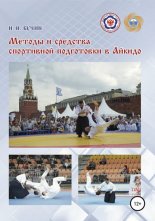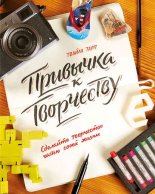—вобода учитьс€. »гра против школы √рей ѕитер

Ц. (1989). Human ethology. New York: Aldine de Gruyter.
Einon,D. F., Morgan, M. J., & Kibbler, C. C. (1978). Brief periods of socialization and later behavior in the rat. Developmental Psychobiology, 11, 231Ц225.
Einstein, A. (1949). Autobiography. In P. Schilpp, Albert Einstein: Philosopherscientist.
Evanston, IL: Library of Living Philosophers.
Eisen, G. (1988). Children and play in the Holocaust: Games among the shadows. Amherst: University of Massachusetts Press.
Elias, C. L., & Berk, L. E. (2002). Self-regulation in young children: Is there a role for sociodramatic play? Early Childhood Research Quarterly, 17, 216Ц238.
Ember, C. R. (1973). Feminine task assignment and the social behavior of boys. Ethos, 1, 424Ц439.
Ember, C. R., & Ember, M. (2005). Explaining corporal punishment of children: A cross-cultural study. American Anthropologist, 107, 609Ц619.
Emfinger, K. (2009). Numerical conceptions reflected during multiage childinitiated pretend play. Journal of Instructional Psychology, 36, 326Ц334.
Engel, S. (2006). Open PandoraТs box: Curiosity in the classroom. Sarah Lawrence Child Development Institute Occasional Papers. Published online at www.slc.edu/media/cdi/pdf/Occasional%20Papers/CDI_Occasional_Paper_2006_Engel.pdf.
Ц. (2009). Is curiosity vanishing? Journal of the American Academy of Child and Adolescent Psychiatry, 48, 777Ц779.
Ensign, F. C. (1921). Compulsory school attendance and child labor. Iowa City, Iowa: Athens Press.
Estrada, C. A., Isen, A. M., & Young, M. J. (1997). Positive affect facilitates integration of information and decreases anchoring in reasoning among physicians. Organizational Behavior and Human Decision Processes, 72, 117Ц135.
Fagen, R. (1981). Animal play behavior. New York: Oxford University Press.
Fairbanks, L. A. (2000). The developmental timing of primate play: A neural selection model. In Parker, S. T., Langer, J., & McKinney, M. L. (Eds.), Biology, brains, and behavior: The evolution of human development, 131Ц15). Santa Fe, NM: School of American Research Press.
Fajans, J. (1997). They make themselves: Work and play among the Baining of Papua New Guinea. Chicago: University of Chicago Press.
Family, Kids, and Youth. (2010). Play Report: International Summary of Results. Published online at www.fairplayforchildren.org/pdf/1280152791.pdf.
Farver, J., & Howes, C. (1988). Cross-cultural differences in social interaction: A comparison of American and Indonesian children. Journal of Cross-Cultural Psychology, 19, 203Ц215.
Feldman, J. (1997). The educational opportunities that lie in self-directed age mixing among children and adolescents. PhD dissertation, Department of Psychology, Boston College.
Feldman, J., & Gray, P. (1999). Some educational benefits of freely chosen age mixing among children and adolescents. Phi Delta Kappan, 80, 507Ц512.
Ferguson, C. (2010). Blazing angels or resident evil? Can violent video games be a force for good? Review of General Psychology, 14, 68Ц81.
Ferguson, C., & Rueda, S. M. (2010). The Hitman study: Violent video game exposure effects on aggressive behavior, hostile feelings, and depression. European Psychologist, 15, 99Ц108.
Finkelhor, D., Turner, H., Ormrod, R., & Hamby, S. L. (2010). Trends in childhood violence and abuse exposure: Evidence from two national surveys. Archives of Pediatric and Adolescent Medicine, 164, 238Ц242.
Fredrickson, B. L. (2001). The role of positive emotions in positive psychology: The broaden-and-build theory of positive emotions. American Psychologist, 56, 218Ц226.
Ц. (2003). The value of positive emotions. American Scientist, 91, 330Ц335. Friedman, S. (1972). Habituation and recovery of visual response in the alert human newborn. Journal of Experimental Child Psychology, 13, 339Ц349.
Furth, H. G. (1996). Desire for society: ChildrenТs knowledge as social imagination, 149Ц173. New York: Plenum.
Furth, H. G., & Kane, S. R. (1992). Children constructing society: A new perspective on children at play. In H. McGurk (Ed.), Childhood social development: Contemporary perspectives. Hillsdale, NJ: Erlbaum.
Galton, M. (2009). Moving to secondary school: Initial encounters and their effects. Perspectives on Education: Primary Secondary Transfer in Science, 2, 5Ц21.
Gardner, P. M. (1991). ForagersТ pursuit of individual autonomy. Current Anthropology, 32, 543Ц572.
Goebel, R. L. (2000). Can we talk? Manifestations of critical thinking in young peopleТs spontaneous talk.MasterТs thesis, School of Education, DePaul University, Chicago.
Goldman, J. A. (1981). Social participation of preschool children in same versus mixed-age groups. Child Development, 32, 644Ц650.
Goldstein, J. (2011). Technology in play. In Anthony D. Pellgrini (Ed.), The Oxford handbook of the development of play, 322Ц337. Oxford: Oxford University Press.
Good, K., & Chanoff, D. (1991). Into the heart: One manТs pursuit of love and knowledge among the Yanomama. New York: Simon & Schuster.
Gordon, D. M. (1999). Ants at work: How an insect society is organized. New York: Free Press.
Gordon, M. (2005). The roots of empathy: Changing the world child by child. Toronto: Thomas Allen Publishers.
Gorrell, J., & Keel, L. (1986). A field study of helping relationships in a cross-age tutoring program. Elementary School Guidance and Counseling, 24, 268Ц276.
Gosso, Y., Otta, E., de Lima, M., Ribeiro, F. J. L., & Bussab, V. S. R. (2005). Play in hunter-gatherer societies. In A. D. Pellegrini & P. K. Smith (Eds.), The nature of play: Great apes and humans, 213Ц253. New York: Guilford.
Gould, R. A. (1969). Yiwara: Foragers of the Australian desert. New York: Charles Scribner.
Gray, P. (1993). Engaging studentsТ intellects: The immersion approach to critical thinking in psychology instruction. Teaching of Psychology, 20, 68Ц74.
Ц. (2009). Play as the foundation for hunter-gatherer social existence. American Journal of Play, 1, 476Ц522.
Ц. (2010). ADHD and school: The problem of assessing normalcy in an abnormal environment. Psychology Today, Freedom to Learn blog, Published online at www.psychologytoday.com/blog/freedom-learn/201007/adhd-and-school-the-problem-assessing-normalcy-in-abnormal-environment.
Ц. (2011a). The decline of play and the rise of psychopathology in childhood and adolescence. American Journal of Play, 3, 443Ц463.
Ц. (2011b). The evolutionary biology of education: How our hunter-gatherer educative instincts could form the basis for education today. Evolution: Education and Outreach, 4, 28Ц40.
Ц. (2011c). The special value of childrenТs age-mixed play. American Journal of Play, 3, 500Ц522.
Gray, P. (2012a). Doing more time in school: A cruel non-solution to our educational problems. Psychology Today, Freedom to Learn blog. Published online at www.psychologytoday.com/blog/freedom-learn/201205/doing-more-time-in-school-cruel-non-solution-our-educational-problems-0.
Gray, P. (2012b). (1) The benefits of unschooling: Report I from a large survey; (2) What leads families to unschool their children: Report II from a large survey; (3) The challenges of unschooling: Report III from a large survey. Psychology Today, Freedom to Learn blog. Three reports, published online beginning with www.psychologytoday.com/blog/freedom-learn/201202/the-benefits-unschooling-report-i-large-survey.
Gray, P., & Chanoff, D. (1986). Democratic schooling: What happens to young people who have charge of their own education? American Journal of Education, 94, 182Ц213.
Gray, P., & Feldman J. (1997). Patterns of age mixing and gender mixing among children and adolescents at an ungraded democratic school. Merrill-Palmer Quarterly, 43, 67Ц86.
Ц. (2004). Playing in the zone of proximal development: Qualities of selfdirected age mixing between adolescents and young children at a democratic school. American Journal of Education, 110, 108Ц145.
Green, C. S., & Bavelier, D. (2003). Action video game modifies visual selective attention. Nature, 423, 534Ц537.
Greenberg, D. (1974). Outline of a new philosophy. Framingham, MA: Sudbury Valley School Press.
Ц. (1987). Free at last: The Sudbury Valley School. Framingham, MA: Sudbury Valley School Press.
Ц. (1992). Sudbury ValleyТs secret weapon: Allowing people of different ages to mix freely at school. In D. Greenberg (Ed.), The Sudbury Valley School experience, 3rd ed., 121Ц136. Framingham, MA: Sudbury Valley School Press.
Greenberg, D., & Sadofsky, M. (1992). Legacy of trust: Life after the Sudbury Valley School experience. Framingham, Massachusetts: Sudbury Valley School Press.
Greenberg, D., Sadofsky, M., & Lempka, J. (2005). The pursuit of happiness: The lives of Sudbury Valley alumni. Framingham, MA: Sudbury Valley School Press.
Greenberg, M. (1992). On the nature of sports at SVS, and the limitations of language in describing SVS to the world. In D. Greenberg (Ed.), The Sudbury Valley School experience, 3rd ed. Framingham, MA: Sudbury Valley School Press.
Greenleaf, B. K. (1978). Children through the ages. New York: McGraw-Hill.
Groos, K. (1898). The play of animals. New York: Appleton.
Ц. (1901). The play of man. New York: Appleton.
Guemple, L. (1988). Teaching social relations to Inuit children. In T. Ingold, D. Riches, & J. Woodburn (Eds.), Hunters and gatherers 2: Property, power, and ideology, 130Ц149. Oxford: Berg.
Hall, F. S. (1998). Social deprivation of neonatal, adolescent, and adult rats has distinct neurochemical and behavioral consequences. Critical Reviews of Neurobiology, 12, 129Ц162.
Harrow, M., Hansford, B. G., & Astrachan-Fletcher, E. B. (2009). Locus of control: Relation to schizophrenia, to recovery, and to depression and psychosis†Ц a 15-year longitudinal study. Psychiatry Research, 168, 186Ц192.
Harter, S. (1981). A new self-report scale of intrinsic versus extrinsic orientation in the classroom: Motivational and informational components. Developmental Psychology, 17, 300Ц312.
Hay, D. F., & Murray, P. (1982). Giving and requesting: Social facilitation of infantsТ offers to adults. Infant Behavior and Development, 5, 301Ц310.
Hennessey, B., & Amabile, T. (2010). Creativity. Annual Review of Psychology, 61, 569Ц598.
Herman, K. N., Paukner, A., & Suomi, S. J. (2011). Gene X environment interactions in social play: Contributions from rhesus macaques. In A. D. Pellgrini (Ed.), The Oxford handbook of the development of play, 58Ц69. Oxford: Oxford University Press.
Hewlett, B. S., Fouts, H. N., Boyette, A. H., & Hewlett, B. L. (2011). Social learning among Congo Basin hunter-gatherers. Philosophical Transactions of the Royal Society B, 366, 1168Ц1178.
Heywood, C. (2001). A history of childhood: Children and childhood in the West from medieval to modern times. Oxford: Blackwell.
Hofferth, S. (2009). Changes in American childrenТs time, 1997Ц2003. International Journal of Time Use Research, 6, 26Ц47.
Hofferth, S. L., & Sandberg, J. F. (2001). Changes in American childrenТs time, 1981Ц1997. In T. Owens & S. L. Hofferth (Eds.), Children at the millennium: Where have we come from, where are we going? 193Ц229. New York: Elsevier Science.
Howard-Jones, P. A., Taylor, J. R., & Sutton, L. (2002). The effect of play on the creativity of young children during subsequent activity. Early Child Development and Care, 172, 323Ц328.
Hughes, M. (1978). Sequential analysis of exploration and play. International Journal of Behavioral Development, 1, 83Ц97.
Hughes, M., & Hutt, C. (1979). Heart-rate correlates of childhood activities: Play, exploration, problem-solving, and day-dreaming. Biological Psychology, 8, 253Ц263.
Huizinga, J. (1955; first German edition published in 1944). Homo Ludens: A study of the play-element in culture. Boston: Beacon Press.
Hyman, M. (2009). Until it hurts: AmericaТs obsession with youth sports and how it harms our kids. Boston: Beacon Press.
Inglis, I. R., Langton, S., Forkman, B., & Lazarus, J. (2001). An information primacy model of exploratory and foraging behavior. Animal Behaviour, 62, 543Ц557.
Ingold, T. (1999). On the social relations of the hunter-gatherer band. In R. B. Lee & R. H. Daly (Eds.), The Cambridge encyclopedia of hunters and gatherers, 399Ц410. Cambridge: Cambridge University Press.
Isen, A. M., Daubman, K. A., & Nowicki, G. P. (1987). Positive affect facilitates creative problem solving. Journal of Personality and Social Psychology, 52, 1122Ц1131.
Jenkins, J. M., & Astington, J. W. (1996). Cognitive factors and family structure associated with theory of mind development in young children. Developmental Psychology, 32, 70Ц78.
Johnson, D. (1998). Many schools putting an end to childТs play. New York Times, April 7, A1, A18.
Johnson, R. (2000). Notes on schooling of the English working class, 1780Ц1850. In Roy Lowe (Ed.), History of education: Major themes. Volume II: Education in its social context, Ch. 31. London: RoutledgeFlamer.
Judge, T. A., LePine, J. A., & Rich, B. L. (2006). Loving yourself abundantly: Relationship of the narcissistic personality to self†Ц and other perceptions of workplace deviance, leadership, and task and contextual performance. Journal of Applied Psychology, 91, 762Ц776.
Kaestle, C. F. (2000). The legacy of common schooling. In Roy Lowe (Ed.), History of education: Major themes. Volume II: Education in its social context, Ch. 35. London: RoutledgeFlamer.
Kaplan, H., Hill, K., Lancaster, J., & Hurtado, A. M. (2000). A theory of human life history evolution: Diet, intelligence, and longevity. Evolutionary Anthropology, 9, 156Ц185.
Kelly, R. I. (1995). The foraging spectrum: Diversity in hunter-gatherer lifeways. Washington, DC: Smithsonian Institution Press.
Kent, S. (1996). Cultural diversity among African foragers: Causes and implications. In S. Kent (Ed.), Cultural diversity among twentieth-century foragers: An African perspective, 1Ц18. Cambridge: Cambridge University Press.
King, N. R. (1982). Work and play in the classroom. Social Education, 46, 110Ц113.
Kohn, M. L. (1980). Job complexity and adult personality. In N. J. Smelser & E. H. Erikson (Eds.), Theories of work and love in adulthood. Cambridge, MA: Harvard University Press.
Kohn, M. L., & Slomczynski, K. M. (1990). Social structure and self-direction: A comparative analysis of the United States and Poland. Cambridge, MA: Basil Blackwell.
Konner, M. (1975). Relations among infants and juveniles in comparative perspective. In M. Lewis & L. A. Rosenblum (Eds.), The origins of behavior, vol.4: Friendship and peer relations, 99Ц129. New York: Wiley.
Ц. (2002). The tangled wing: Biological constraints on the human spirit, 2nd ed. New York: Holt.
Ц. (2010). The evolution of childhood. Cambridge, MA: Harvard University Press.
Konrath, S. H., OТBrien, E. H., & Hsing, C. (2011). Changes in dispositional empathy in American college students over time: A meta-analysis. Personality and Social Psychology Review, 15, 180Ц198.
Lancy, D. F., Bock, J., & Gaskins, S. (2010). Putting learning into context. In D. F. Lancy, J. Bock, & S. Gaskins (Eds.), The anthropology of learning in childhood, 3Ц10. Lanham, MD: AltaMira Press.
Lanza, M. (2012). Playborhood: Turn your neighborhood into a place for play. Menlo Park, CA: Free Play Press.
LeBlanc, G., & Bearison, D. J. (2004). Teaching and learning as bi-directional activity: Investigating dyadic interactions between child teachers and child learners. Cognitive Development, 19, 499Ц515.
Lee, R. B. (1988). Reflections on primitive communism. In T. Ingold, D. Riches, & J. Woodburn (Eds.), Hunters and gatherers 1, 252Ц268. Oxford: Berg.
Lee, R. B., & DeVore, I. (1968). Problems in the study of hunters and gatherers. In R. B. Lee & I. Lee (Eds.), Man the hunter, 3Ц12. Chicago: Aldine.
Lepper, M. R., Corpus, J. H., & Iyengar, S. S. (2005). Intrinsic and extrinsic motivational orientations in the classroom: Age differences and academic correlates. Journal of Educational Psychology, 97, 184Ц196.
Lepper, M. R., Greene, D., & Nisbett, R. E. (1973). Undermining childrenТs intrinsic interest with extrinsic reward: A test of the УoverjustificationФ hypothesis. Journal of Personality and Social Psychology, 28, 129Ц137.
Lepper, M. R., & Henderlong, J. (2000). Turning УplayФ into УworkФ and УworkФ into УplayФ: 25 years of research on intrinsic versus extrinsic motivation. In C. Sansone & J. M. Harackiewicz (Eds.), Intrinsic and extrinsic motivation, 257Ц307. San Diego, CA: Academic Press.
Leslie, A. M. (1994). Pretending and believing: Issues in the theory of ToMM. Cognition, 50, 211Ц238.
Liebenberg, L. (1990). The art of tracking: The origin of science. Claremont, South Africa: David Philip Publishers.
Liedloff, J. (1977). The continuum concept, rev. ed. New York: Knopf.
Luthar, S. S., & DТAvanzo, K. (1999). Contextual factors in substance use: A study of suburban and inner-city adolescents. Development and Psychopathology, 11, 845Ц867.
Luthar, S. S., & Latendresse, S. J. (2005). Children of the affluent: Challenges to well-being. Current Directions in Psychological Science, 14, 49Ц55.
Marshall, L. (1976). The!Kung of Nyae Nyae. Cambridge, MA: Harvard University Press.
Martini, M. (1994). Peer interactions in Polynesia: A view from the Marquesas. In J. L. Roopnarine, J. E. Johnson, & F. H. Hooper (Eds.), ChildrenТs play in diverse cultures, 73Ц103. Albany: State University of New York Press.
Mayes, R., Bagwell, C., & Erkulwater, J. (2009). Medicating children: ADHD and pediatric mental health. Cambridge, MA: Harvard University Press.
Maynard, A. E. (2002). Cultural teaching: The development of teaching skills in Maya sibling interactions. Child Development, 73, 969Ц982.
Maynard, A. E., & Tovote, K. E. (2010). Learning from other children. In D. F. Lancy, J. Bock, & S. Gaskins (Eds.), The anthropology of learning in childhood, 181Ц205. Lanham, MD: AltaMira Press.
McKinstery, J., & Topping, K. J. (2003). Cross-age peer tutoring of thinking skills in high school. Educational Psychology in Practice, 19, 199Ц217.
McLeod, L., & Lin, L. (2010). A childТs power in game-play. Computers & Education,54, 517Ц527.
McMahon, R. (2007). Everybody does it: Academic cheating is at an all-time high. San Francisco Chronicle, September 9.
Melton, J. V. H. (1988). Absolutism and the eighteenth-century origins of compulsory schooling in Prussia and Austria. Cambridge: Cambridge University Press.
Merrell, K. W., Isava, D. M., Gueldner, B. A., & Ross, S. W. (2008). How effective are school bullying intervention programs? A meta-analysis of intervention research. School Psychology Quarterly, 23, 26Ц42.
Michaels, J. W., Blommel, J. M., Brocato, R. M., Linkous, R. A., & Rowe, J. S. (1982). Social facilitation and inhibition in a natural setting. Replications in Social Psychology, 2, 21Ц24.
Miller, P. (2000). Historiography of compulsory schooling. In Roy Lowe (Ed.), History of education: Major themes. Volume II: Education in its social context, Ch. 38. London: RoutledgeFlamer.
Mitra, S. (2003). Minimally invasive education: A progress report on the Уhole-inthe-wallФ experiments. British Journal of Educational Technology, 34, 267Ц371.
Ц. (2004). Hole in the wall. Dataquest (India), September 23. Published online at http://dqindia.ciol.commakesections.asp/04092301.asp.
Ц. (2005). Self-organizing systems for mass computer literacy: Findings from the Уhole in the wallФ experiments. International Journal of Development Issues, 4, 71Ц81.
Mitra, S., & Dangwal, R. (2010). Limits to self-organising systems of learningЦ the Kalikuppam experiment. British Journal of Educational Technology, 41, 672Ц688.
Mitra, S., & Rana, V. (2001). Children and the Internet: Experiments with minimally invasive education in India. British Journal of Educational Technology, 32, 221Ц232.
Mounts, N. S., & Roopnarine, J. L. (1987). Social-cognitive play patterns in sameage and mixed-age preschool classrooms. American Educational Research Journal, 24, 463Ц476.
Mulhern, J. (1959). A history of education: A social interpretation, 2nd ed. New York: Ronald Press.
Nauert, R. (2008). Teen suicide rates remain high. Published online at http://psychcentral.com/news/2008/09/04/teen-suicide-rates-remain-high/2874.html.
Newsom, C. R., Archer, R. P., Trumbetta, S., & I. Gottesman, I. I. (2003). Changes in adolescent response patterns on the MMPI/MMPI-A across four decades. Journal of Personality Assessment, 81, 74Ц84.
Newton, E., & Jenvey, V. (2011). Play and theory of mind: Associations with social competence in young children. Early Child Development and Care, 181, 761Ц773.
Noddings, N. (2005). The challenge to care in the schools: An alternative approach to education, 2nd ed. New York: Teachers College Press.
OТBrien, J., & Smith, J. (2002). Childhood transformed? Risk perceptions and the decline of free play. British Journal of Occupational Therapy, 65, 123Ц128.
Okamoto-Barth, S., Call, J., & Tomasello, M. (2007). Great apesТ understanding of other individualsТ line of sight. Psychological Science, 18, 462Ц468.
Oleck, J. (2008). Most high school students admit to cheating. School Library Journal, March 10.
Olson, C. K. (2010). ChildrenТs motivation for video game play in the context of normal development. Review of General Psychology, 14, 180Ц187.
Orme, N. (2001). Medieval children. New Haven, CT: Yale University Press.
Osborne, J. A., Simon, S. B., & Collins, S. (2003). Attitudes towards science: A review of the literature and its implications. International Journal of Science Education, 25, 1049Ц1079.
Ozment, K. (2011). Welcome to the age of overparenting. Boston Magazine, December, 88Ц93, 136Ц137.
Parten, M. (1932). Social participation among preschool children. Journal of Abnormal and Social Psychology, 28, 136Ц147.
Pastor, P. N., & Reuben, M. A. (2008). Diagnosed attention deficit hyperactivity disorder and learning disability: United States, 2004Ц2006. Vital and health statistics, Series 10, #237. Washington, DC: US Department of Health and Human Services.
Patall, E. A., Cooper, H., & Robinson, J. C. (2008). The effects of choice on intrinsic motivation and related outcomes: A meta-analysis of research findings. Psychological Bulletin, 134, 270Ц300.
Pellis, S. M., & Pellis, V. C. (2011). Rough and tumble play: Training and using the social brain. In A. D. Pellgrini (Ed.), The Oxford handbook of the development of play, 245Ц259. Oxford: Oxford University Press.
Pellis, S. M., Pellis, V. C., & Bell, H. C. (2010). The function of play in the development of the social brain. American Journal of Play, 2, 278Ц296.
Piaget, J. (1932; 1965). The moral judgment of the child. New York: Free Press.
Power, T. G. (2000). Play and exploration in animals and children. Mahwah, NJ: Lawrence Erlbaum Associates.
Przybylski, A. K., Rigby, C. S., & Ryan, R. M. (2010). A motivational model of video game engagement. Review of General Psychology, 14, 154Ц166.
Przybylski, A. K., Weinstein, N., Ryan, R. M., & Rigby, C. S. (2009). Having versus wanting to play: Background and consequences of harmonious versus obsessive engagement in video games. CyberPsychology & Behavior, 12, 485Ц492.
Pytel, B. (2007). Cheating is on the rise. Published online at www.suite101.com/content/cheating-is-on-the-rise-a31238.
Ray, B. D. (2011). Research facts on homeschooling. Salem, OR: National Home Education Research Institute. Published online at www.nheri.org.
Reaves, B., & Malone, T. W. (2007). Leadership in games and work: Implications for the enterprise of massively multiplayer online role-playing games. Seriosity Inc. Published online at www.seriosity.com/downloads/Leadership_In_Games_Seriosity_and_IBM.pdf.
Reich, J. W., Erdal, K. J., & Zautra, A. (1997). Beliefs about control and health behaviors. In D. S. Gochman (Ed.), Handbook of health behavior research: I, Personal and social determinants. New York: Plenum.
Renner, M. J. (1988). Learning during exploration: The role of behavioral topography during exploration in determining subsequent adaptive behavior. International Journal of Comparative Psychology, 2, 43Ц56.
Rheingold, H. L., Hay, D. F., & West, M. J. (1976). Sharing in the second year of life. Child Development, 47, 1148Ц1158.
Ricaurte, G. A., Mechan, A. O., Yuan, J., Hatzidimitriou, G., Xie, T., Mayne, A.H., & McCann, U. D. (2005). Amphetamine treatment similar to that used in the treatment of ADHD damages dopamine nerve endings in the striatum of adult nonhuman primates. Journal of Pharmacology and Experimental Therapeutics, 315, 91Ц98.
Richards, C. A., & Sanderson, J. A. (1999). The role of imagination in facilitating deductive reasoning in 2-, 3-, and 4-year-olds. Cognition, 72, 81Ц89.
Ridley, M. (2003). Nature via nurture: Genes, experience, and what makes us human. New York: HarperCollins.
Roberts, W. A., Cruz, C., & Tremblay, J. (2007). Rats take correct novel routes and shortcuts in an enclosed maze. Journal of Experimental Psychology: Animal Behavior Processes, 33, 79Ц91.
Roopnarine, J. L., Johnson, J. E., & Hooper, F. H. (Eds.). (1994). ChildrenТs play in diverse cultures. Albany: State University of New York Press.
Ross, E. A. (1901). Social control: A survey of the foundations of order. New York: Macmillan.
Rubin, K. H., Fein, G. G., & Vandenberg, B. (1983). Play. In P. H. Mussen & E. M. Hetherington (Eds.), Handbook of child psychology, vol. 4, 693Ц774. New York: Wiley.
Ruff, H. A. (1986). Components of attention during infantsТ manipulative exploration. Child Development, 75, 105Ц114.
Ц. (1989). The infantТs use of visual and haptic information in the perception and recognition of objects. Canadian Journal of Psychology, 43, 302Ц319.
Sadofsky, M., Greenberg, D., & Greenberg, H. (1994). Kingdom of childhood: Growing up at Sudbury Valley School. Framingham, MA: Sudbury Valley School Press.
Sahlins, M. (1972). Stone age economics. Chicago: Aldine-Atherton.
Salamone, F. A. (1997). The Yanomami and their interpreters: Fierce people or fierce interpreters? Lanham, MD: University Press of America.
Saltz, E., Dixon, D., & Johnson, J. (1977). Training disadvantaged preschoolers on various fantasy activities: Effects on cognitive functioning and impulse control. Child Development, 48, 367Ц380.
Schneller, R. J. (2002). Farragut: AmericaТs first admiral. Dulles, VA: BrasseyТs.
Schonert-Reichl, K. A., Smith, V., & Zaidman-Zait, A. (2011). Effectiveness of the Roots of Empathy program in fostering social-emotional development in primary grade children.Manuscript submitted for publication.
Schulz, L. E., & Bonawitz, E. G. (2007). Serious fun: Preschoolers engage in more exploratory play when evidence is confounded. Developmental Psychology, 43, 1045Ц1050.
Schulz, L. E., Gopnik, A., & Glymour, C. (2007). Preschool children learn about causal structure from conditional interventions. Developmental Science, 10, 322Ц332.
Sherif, M., Harvey, O. J., White, B. J., Hood, W. E., & Sherif, C. S. (1961). Intergroup conflict and cooperation: The Robbers Cave experiment. Norman: University of Oklahoma Book Exchange.
Shostak, M. (1981) Nisa: The life and words of a!Kung woman. Cambridge, MA: Harvard University Press.
Silberbauer, G. (1982). Political Process in G/wi Bands. In E. Leacock & R. Lee (Eds.), Politics and History in Band Societies, 23Ц36. Cambridge: Cambridge University Press.
Skenazy, L. (2009). Free-range kids: Giving our children the freedom we had without going nuts with worry. San Francisco: Jossey-Bass.
Smith, H. (2000). The scarred heart: Understanding and identifying kids who kill. Knoxville, TN: Callisto.
Smith, J. D., Schneider, B. H., Smith, P. K., & Ananiadou, K. (2004). The effectiveness of whole-school antibullying programs: A synthesis of evaluation research. School Psychology Review, 33, 547Ц560.
Smith, P. K. (2005a). Play: Types and functions in human development. In B. J. Ellis & D. F. Bjorklund (Eds.), Origins of the social mind. New York: Guilford.
Ц. (2005b). Social and pretend play in children. In A. D. Pellegrini & P. K. Smith (Eds.), The nature of play: Great apes and humans, 137Ц212. New York: Guilford.
Spence, I., & Feng, J. (2010). Video games and spatial cognition. Review of General Psychology, 14, 92Ц104.
Spencer, V. G. (2006). Peer tutoring and students with emotional or behavioral disorders: A review of the literature. Behavioral Disorders, 31, 204Ц222.
Spinka, M., Newberry, R. C., & Bekoff, M. (2001). Mammalian play: Training for the unexpected. Quarterly Review of Biology, 76, 141Ц168.
Sudbury Valley School. (1970). The crisis in American education: An analysis and proposal. Framingham, MA: Sudbury Valley School Press.
Sutton-Smith, B., & Roberts, J. M. (1970). The cross-cultural and psychological study of games. In G. Luschen (Ed.), The cross-cultural analysis of sport and games, 100Ц108. Champaign, IL: Stipes.
Sylva, K., Bruner, J., & Genova, P. (1976). The role of play in the problem solving of children 3Ц5 years old. In J. Bruner, A. Jolly, & K. Sylva (Eds.), Play, 244Ц257. New York: Basic Books.
Symons, D. (1978). Play and aggression: A study of rhesus monkeys. New York: Columbia University Press.
Thomaes, S., Bushman, B. J., DeCastro, B. O., & Stegge, H. (2009). What makes narcissists bloom? A framework for research on the etiology and development of narcissism. Development and Psychopathology, 21, 1233Ц1247.
Thomas, E. M. (1959). The harmless people. New York: Alfred A. Knopf.
Ц. (2006). The old way. New York: Farrar, Straus & Giroux.
Tomonaga, M. (2007). Is chimpanzee (Pan troglodytes) spatial attention reflexively triggered by gaze cue? Journal of Comparative Psychology, 121, 156Ц170.
Turnbull, C. M. (1961). The forest people. New York: Simon & Schuster.
Ц. (1982). The ritualization of potential conflict between the sexes among the Mbuti. In E. G. Leacock & R. B. Lee (Eds.), Politics and history in band societies, 133Ц155. Cambridge: Cambridge University Press.
Twenge, J. M. (2000). The age of anxiety? Birth cohort changes in anxiety and neuroticism, 1952Ц1993. Journal of Personality and Social Psychology, 79, 1007Ц1021.
Twenge, J. M., & Foster, J. D. (2010). Birth cohort increases in narcissistic personality traits among American college students, 1982Ц2009. Social Psychological and Personality Science, 1, 9Ц106.
Twenge, J. M., Gentile, B., DeWall, C. N., Ma, D., Lacefield, K., & Schurtz, D. R. (2010). Birth cohort increase in psychopathology among young Americans, 1938Ц2007: A cross-temporal meta-analysis of the MMPI. Clinical Psychology Review, 30, 145Ц154.
Twenge, J. M., Konrath, S., Foster, J. D., Campbell, W. K., & Bushman, B. J. (2008). Egos inflating over time: A cross-temporal meta-analysis of the Narcissistic Personality Inventory. Journal of Personality, 76, 875Ц901.
Twenge, J. M., Zhang, L., & Im, C. (2004). ItТs beyond my control: A cross-temporal meta-analysis of increasing externality in locus of control, 1960Ц2002. Personality and Social Psychology Review, 8, 308Ц319. US Department of Education. (2008). National center for education, issue brief on homeschooling. Published online at http://nces.ed.gov.
Vedder-Weiss, D., & Fortus, D. (2011). AdolescentsТ declining motivation to learn science: Inevitable or not? Journal of Research in Science Teaching, 48, 199Ц216.
Von Drehle, D. (2010). The case against summer vacation. Time, August 2, 36Ц42.
Vygotsky, L. (1978). Interaction between learning and development. In M. Cole, V. John-Steiner, S. Scribner, and E. Souberman (Eds.), Mind and society: The development of higher psychological processes. Cambridge, MA: Harvard University Press.
Ц. (1933; 1978). The role of play in development. In M. Cole, V. John-Steiner, S. Scribner, & E. Souberman (Eds.), Mind in society: The development of higher psychological processes, 92Ц104. Cambridge, MA: Harvard University Press.
Walker, R., Hill, K., Kaplan, H., & McMillan, G. (2002). Age-dependency in hunting ability among the Ach of Eastern Paraguay. Journal of Human Evolution, 42, 639Ц657.
Wannenburgh, A. (1979). The bushmen. New York: Mayflower Books.






